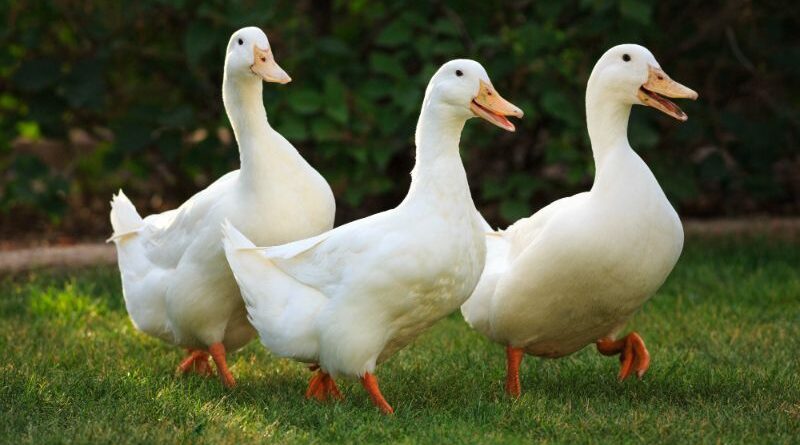Welcome to a quack-tastic journey as we explore the mesmerizing world of ducks! In this blog, we’ll dive into the incredible diversity of these water-loving avians, highlighting 12 fascinating types that captivate with their colors, behaviors, and habitats. From the iconic Mallard to the elusive Mandarin Duck, each species has a unique tale to tell.
Whether you’re an avid birdwatcher or just curious about the wonders of nature, join us as we unravel the secrets of these feathered friends. Get ready to be enthralled by their vibrant plumage, intriguing behaviors, and the ecosystems they call home. Let’s embark on a webbed adventure and celebrate the charm of the 12 most captivating types of ducks!
12 Fascinating Types of Ducks
Mallard (Anas platyrhynchos)
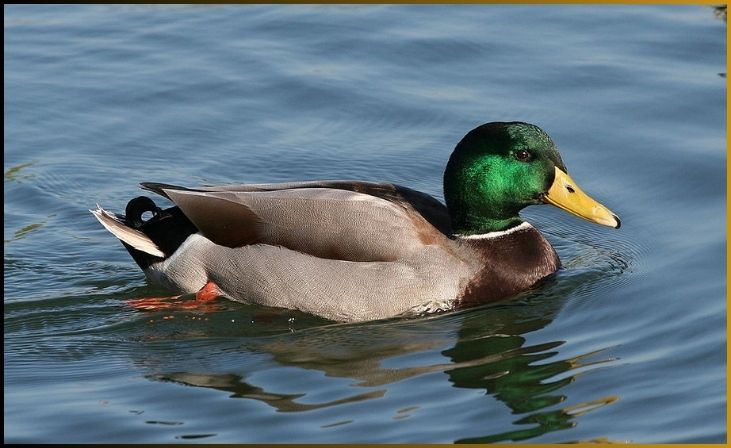
The Mallard, perhaps the most recognizable duck species, boasts a vibrant male with its iconic emerald-green head and distinct white neck ring. Females are more subtly colored, displaying mottled brown plumage. Found across North America, Europe, and Asia, Mallards thrive in diverse habitats, from urban ponds to remote wetlands. Their adaptability to various environments and their characteristic “quacking” make them a common sight for birdwatchers. Despite their ubiquity, the Mallard’s complex courtship displays and social behaviors add an intriguing layer to their fascinating nature.
Also Read: Different Colors of Dragonflies
Mandarin Duck (Aix galericulata)
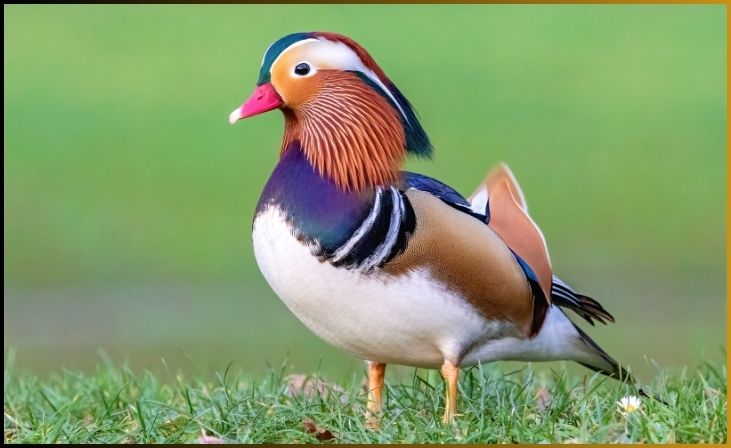
Renowned for its breathtaking beauty, the Mandarin Duck is a jewel among ducks. Native to East Asia, these ducks exhibit stunning iridescent plumage with intricate patterns of orange, blue, green, and white. The male’s elaborate breeding plumage is a spectacle, while the female sports more understated yet elegant colors. Unlike many ducks, Mandarins prefer wooded habitats and nest in tree cavities. This preference, along with their captivating appearance, makes them a sought-after subject for birdwatchers and photographers, adding an air of mystique to their presence.
Northern Shoveler (Anas clypeata)
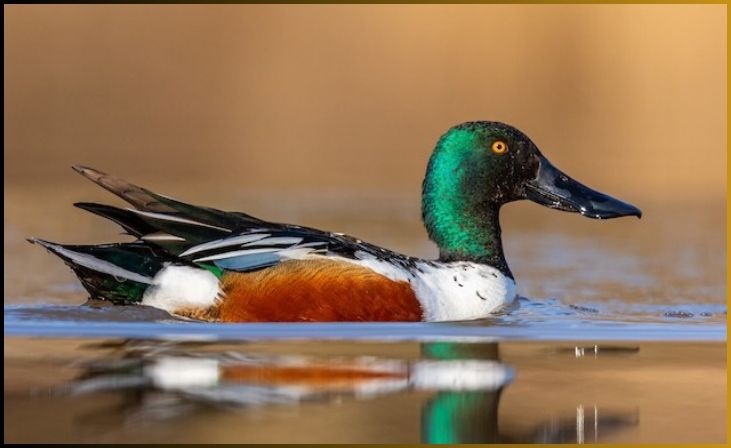
Characterized by its distinctive spatula-shaped bill, the Northern Shoveler is a unique and fascinating duck species. Males boast striking plumage with iridescent green heads, white chests, and chestnut-brown sides. The females, while less flamboyant, have an elegant mottled appearance. These ducks are often found in shallow wetlands, using their specialized bills to filter food from the water. Their synchronized feeding and elaborate courtship rituals, including circular displays, contribute to the allure of observing these charismatic waterfowl in their natural habitats.
Harlequin Duck (Histrionicus histrionicus)
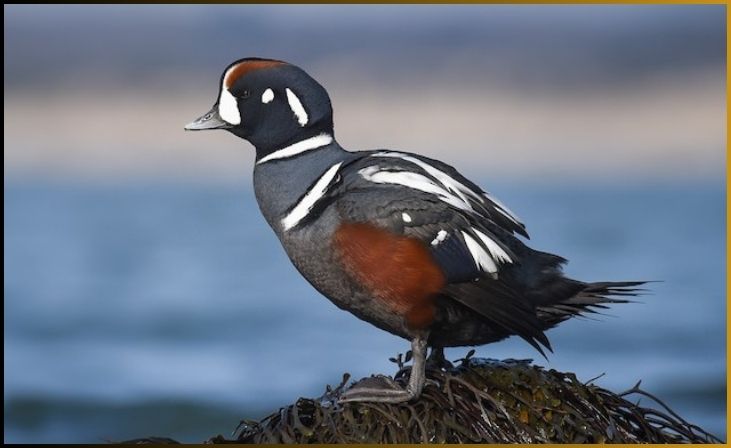
The Harlequin Duck, with its distinctive coloration and quirky appearance, is a delight for bird enthusiasts. Males showcase bold blue, white, and chestnut markings, resembling a harlequin costume. Females, though less flamboyant, exhibit a subtle elegance with their mottled brown plumage. These ducks thrive in fast-flowing streams and rivers, showcasing their remarkable agility in navigating turbulent waters. The Harlequin Duck’s presence in North America, Europe, and Asia adds an international flair to its appeal, making it a captivating subject for those seeking diversity in their birdwatching experiences.
Wood Duck (Aix sponsa)
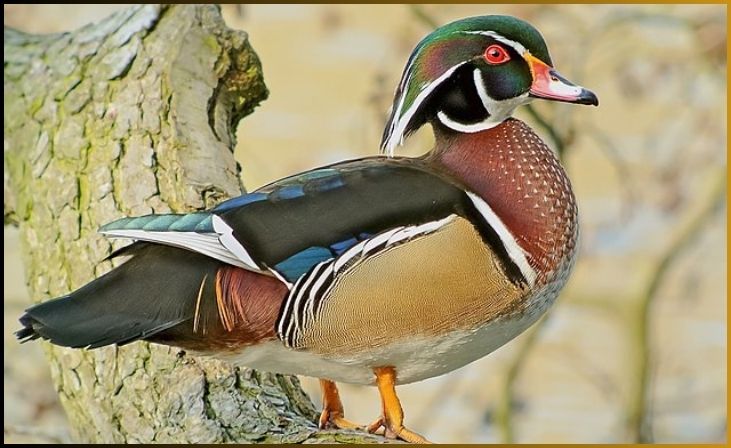
The Wood Duck, known for its stunning and intricate plumage, is a true gem of North American wetlands. Both males and females display striking iridescent colors, with males boasting an array of hues, including metallic greens, purples, and whites. To their surprise, Wood Ducks often use tree hollows to make their nests. Their adaptability to both wooded and open habitats, coupled with their impressive aerial displays during courtship, makes them a sought-after sight for birdwatchers. Conservation efforts have played a crucial role in preserving these ducks, contributing to the celebration of their remarkable beauty in the wild.
Pintail Duck (Anas acuta)

Recognized for its long, slender neck and pointed tail feathers, the Pintail Duck is an elegant and graceful species found on every continent except Antarctica. Male Pintails exhibit a distinctive white stripe running down their necks, complementing their chocolate-brown heads. Female Pintails are known for their subtle mottled appearance, providing effective camouflage during nesting. These ducks prefer open wetlands and are often seen dabbling in shallow waters. Their intricate courtship displays, involving synchronized movements and calls, add an enchanting element to the observation of these migratory waterfowl.
Teal (Anas crecca)
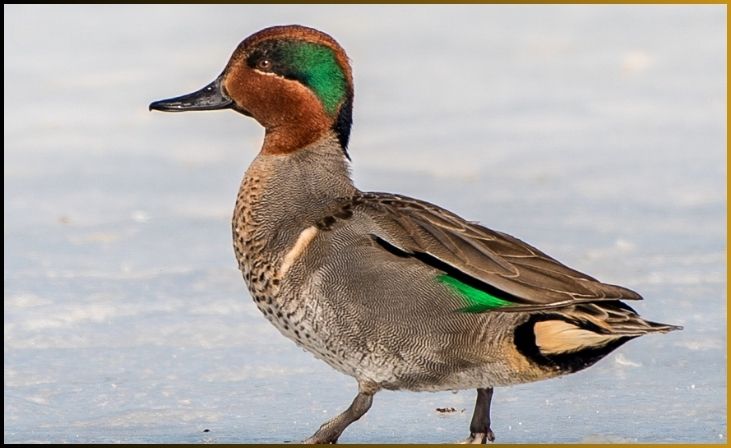
Teal, comprising several species like the Green-winged Teal and Blue-winged Teal, are small, agile ducks known for their rapid flight and vibrant wing markings. Males boast distinctive colorful patches on their wings, while females exhibit mottled brown plumage for effective camouflage. These ducks are widespread and can be found in diverse habitats, including ponds, marshes, and estuaries. Their acrobatic flight patterns and energetic foraging behaviors make them a dynamic and engaging species to observe, appealing to birdwatchers seeking the thrill of rapid aerial displays and the subtle beauty of their intricate feather patterns.
Also Read: Snake Bite First Aid and Treatment
Eider Duck (Somateria mollissima)

The Eider Duck (Somateria mollissima), a large sea duck, inhabits coastal areas of the Northern Hemisphere. Known for its thick down feathers, Eiders are essential for traditional eiderdown harvesting in some regions. Male Eiders showcase contrasting black and white plumage, while females display mottled browns for effective camouflage during nesting. These social ducks are often seen in colonies, engaging in synchronized courtship displays and communal nesting practices. The Eider’s connection to cultural practices and its role in coastal ecosystems make it a unique and culturally significant species, inviting exploration beyond its captivating appearance.
Goldeneye Duck (Bucephala clangula)

The striking Goldeneye Duck, named for its vibrant golden-yellow eye, is a cold-water species found in North America and Europe. Males exhibit bold black and white plumage with an iridescent greenish-black head. Females, while more subdued, display an elegant chocolate-brown plumage. These diving ducks prefer freshwater lakes and rivers, where they skillfully dive for aquatic invertebrates and small fish. The Goldeneye’s distinctive courtship displays, involving head bobbing and wing flapping, contribute to the allure of observing these ducks in their natural habitats, showcasing both beauty and behavioral intrigue.
Canvasback Duck (Aythya valisineria)
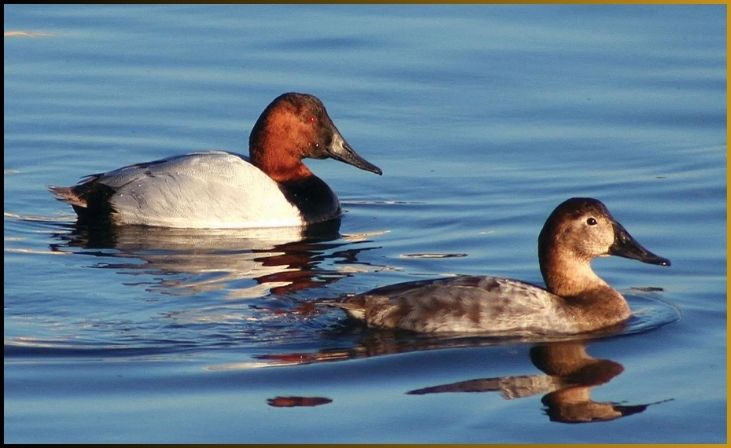
The Canvasback Duck, known for its unique sloping profile and striking red eyes, is a diving duck native to North America. Males feature striking white bodies, chestnut-red heads, and black chests, creating a visually distinctive appearance. Females, though less flamboyant, exhibit a subtle elegance with mottled brown plumage. Canvasbacks prefer large freshwater bodies, where they dive for submerged aquatic vegetation. Their preference for deep waters and their impressive long-distance migrations make them a notable species for birdwatchers seeking to witness the dynamic behaviors of diving ducks in expansive aquatic habitats.
Ruddy Duck (Oxyura jamaicensis)
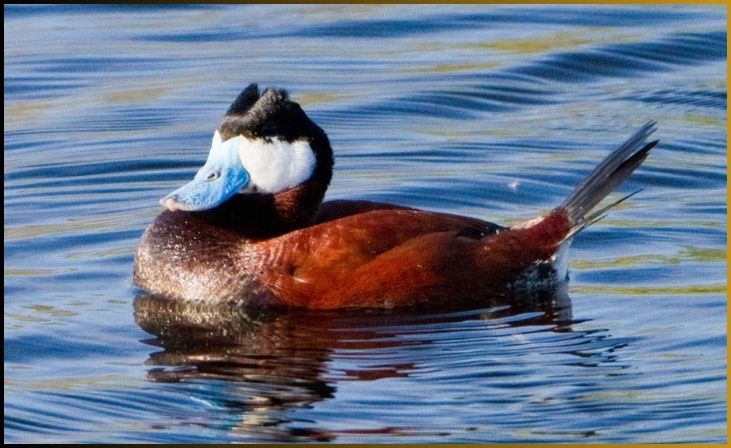
The Ruddy Duck, a small yet boldly colored species, is native to North and South America. Males sport a distinctive bright blue bill, cinnamon-colored bodies, and an exuberant white cheek patch. Females, in contrast, display a more modest brown plumage. Known for their amusing courtship displays, male Ruddies create bubbles in the water and perform spirited head-bobbing movements to attract females. These ducks prefer shallow marshes and ponds, where their buoyant bodies and unique courtship antics make them a joy to observe for both seasoned birdwatchers and those new to the world of waterfowl.
Also Read: Largest Tiger Reserves
Australian Wood Duck (Chenonetta jubata)
The Australian Wood Duck, also known as the Maned Duck, is a captivating waterfowl native to Australia and New Zealand. Renowned for its distinctive appearance, the male showcases intricate chestnut and black markings, while the female exhibits more subdued mottled brown plumage. One of the few duck species known to perch in trees, Australian Wood Ducks often nest in tree hollows or on elevated platforms. Their adaptability to diverse habitats, including wetlands and grassy areas, makes them a common sight in both rural and urban environments. Observing these ducks reveals a unique blend of arboreal habits and graceful ground foraging, adding a charming dimension to the spectrum of duck diversity.
Conclusion
The diverse world of ducks unveils a tapestry of colors, behaviors, and habitats. From the iconic Mallard to the elegant Common Eider, each species contributes to the rich biodiversity of our planet. Whether you’re drawn to the vibrant plumage, intricate courtship displays, or the unique ecological roles these ducks play, exploring their world opens a window into the marvels of nature. So, grab your binoculars and immerse yourself in the quack-tastic journey of discovering the 12 fascinating types of ducks. Happy birdwatching!
FAQs
The Mandarin Duck (Aix galericulata) takes the crown for its vibrant and strikingly beautiful multicolored plumage.
The Madagascar Pochard (Aythya innotata), considered one of the rarest ducks globally, can be found in the wetlands of Madagascar, making it a sought-after sighting for bird enthusiasts.

